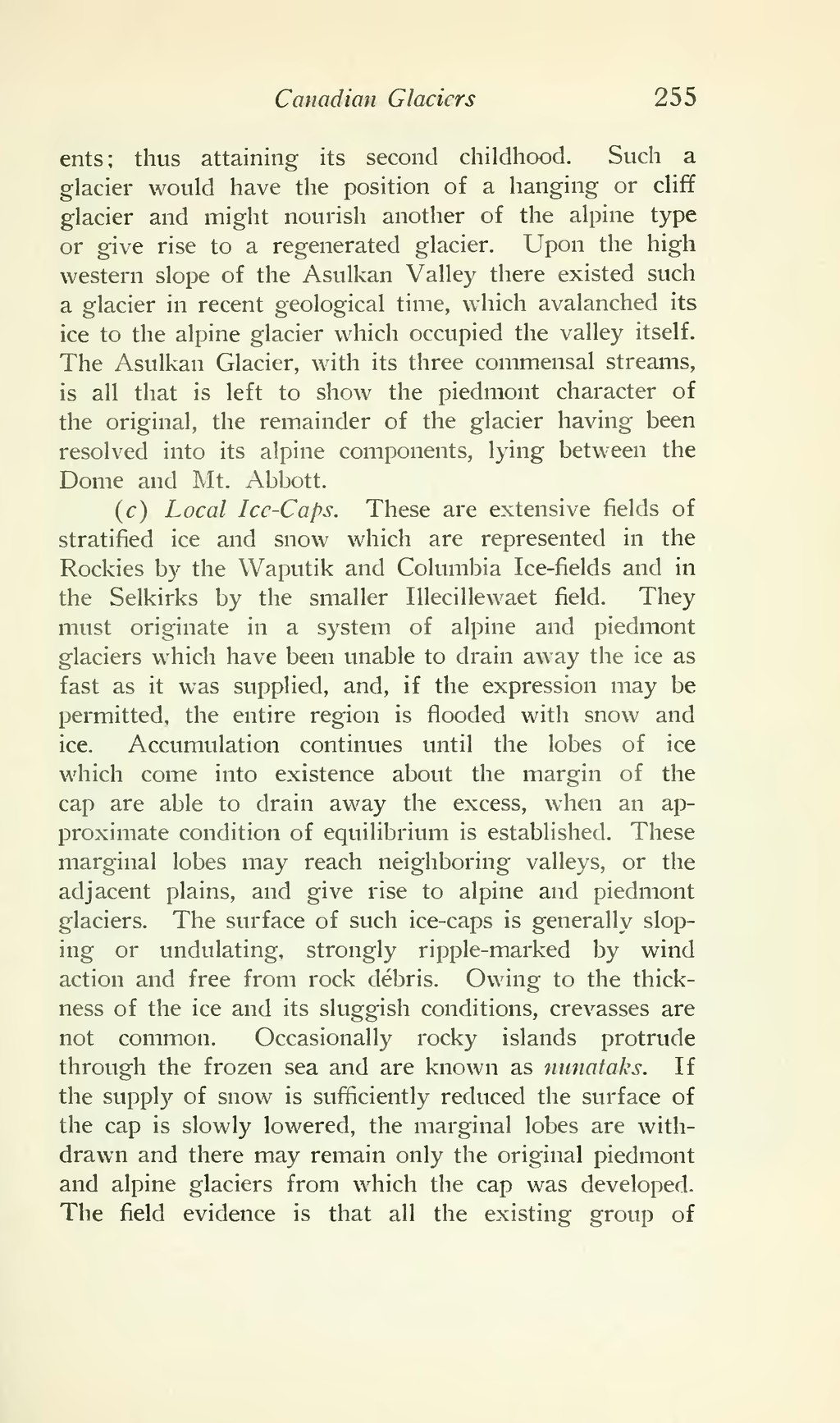ents; thus attaining its second childhood. Such a glacier would have the position of a hanging or cliff glacier and might nourish another of the alpine type or give rise to a regenerated glacier. Upon the high western slope of the Asulkan Valley there existed such a glacier in recent geological time, which avalanched its ice to the alpine glacier which occupied the valley itself. The Asulkan Glacier, with its three commensal streams, is all that is left to show the piedmont character of the original, the remainder of the glacier having been resolved into its alpine components, lying between the Dome and Mt. Abbott.
(c) Local Ice-Caps. These are extensive fields of stratified ice and snow which are represented in the Rockies by the Waputik and Columbia Ice-fields and in the Selkirks by the smaller Illecillewaet field. They must originate in a system of alpine and piedmont glaciers which have been unable to drain away the ice as fast as it was supplied, and, if the expression may be permitted, the entire region is flooded with snow and ice. Accumulation continues until the lobes of ice which come into existence about the margin of the cap are able to drain away the excess, when an approximate condition of equilibrium is established. These marginal lobes may reach neighboring valleys, or the adjacent plains, and give rise to alpine and piedmont glaciers. The surface of such ice-caps is generally sloping or undulating, strongly ripple-marked by wind action and free from rock debris. Owing to the thickness of the ice and its sluggish conditions, crevasses are not common. Occasionally rocky islands protrude through the frozen sea and are known as nunataks. If the supply of snow is sufficiently reduced the surface of the cap is slowly lowered, the marginal lobes are withdrawn and there may remain only the original piedmont and alpine glaciers from which the cap was developed. The field evidence is that all the existing group of
